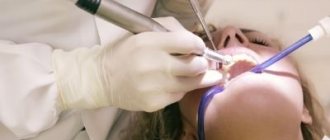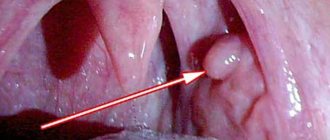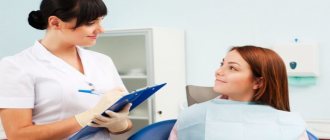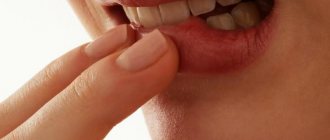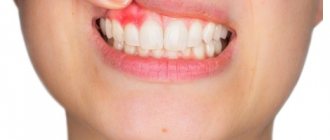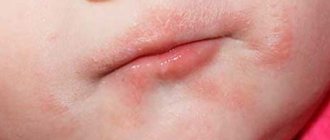Content:
- Possible reasons
- Dental causes of inflammation of the lymph nodes on the chin
- How to understand that the problem is in the lymph nodes
- Diagnostic measures
- How are lymph nodes treated?
- Preventive measures
If the lymph nodes are inflamed, it is important to undergo a comprehensive medical examination.
This condition can be accompanied by many diseases, both related to the field of dentistry and not related to it. Lymph nodes are peripheral organs of the lymphatic system. They perform the functions of a biological filter. Passing through their tissues, lymph enters different parts of the body and internal organs.
If the lymphoid structure has increased, it means there is an inflammatory process. It is necessary to find out as soon as possible what functional disorders it is associated with. This will allow you to create an effective treatment plan and prevent the development of severe complications.
Post-procedure care
When planning to quickly remove and remove large and small subcutaneous red pimples on the chin, we must not forget that after any manipulation of the dermis, it will require mandatory and rather lengthy rehabilitation. Sometimes it can last from several hours to 7-12 days. However, the main thing is the correctly chosen care measures, which should be prescribed by a specialist:
- For the entire recovery period, you should avoid sunbathing or going to the solarium. Covers should be carefully protected from exposure to direct rays of the sun.
- It is advisable to try to avoid sudden changes in external temperatures. For example, after a bath or sauna, do not go out into the cold.
- Use creams and other products with powerful UV filters.
- Do not wash your face with tap water, give preference to gentle and gentle cosmetic products.
- No homemade masks, peelings, alcohol-containing compounds, caustic soaps, etc. should be present in the care.
Immediately after any cleaning, it is not recommended to touch your chin or the entire face with your hands; it would not hurt to change regular towels to disposable paper towels or replace bed linen. For the first few days, it is also advised not to use decorative makeup.
Possible reasons
The lymphatic system is the basis of immunity . It prevents the spread of pathological microorganisms and blocks the occurrence of many disease processes. In various diseases, lymphocytes begin to actively multiply to slow down inflammation. Then the lymph nodes enlarge.
If structures localized under the jaw and in the neck area “grow,” it is most likely an infection, that is, the disorder is caused by bacteria. But sometimes the condition occurs in the absence of infection.
Among the most common infectious causes:
- Colds, viruses. Their pathogens affect the ENT organs, and general intoxication is observed. In this scenario, sore throats, pharyngitis, tonsillitis, acute respiratory viral infections, acute respiratory infections, sinusitis, otitis media, etc. occur.
- Tuberculosis. With lymphadenitis, the entire neck swells. In advanced cases, lymphoid tissues located in the abdominal cavity and chest increase. The pathology is treated conservatively and surgically.
- Dental problems. Pulpitis, caries, periodontitis - all these are provoking diseases.
- Toxoplasmosis. People become infected with it from domestic animals (most often from cats). In addition to the growth of nodes, with this diagnosis the following are observed: high body temperature, headaches, an increase in the size of the spleen and liver. But very often the disease is asymptomatic.
- Venereal pathologies. Transmitted sexually. The body reacts very sharply to most of them, so already in the first days the patient notices that the lymph nodes have become enlarged and began to hurt, and severe weakness has appeared.
- Herpes. It manifests itself as an increase in the volume of lymphoid tissue in the neck, under the jaw and in the groin. Requires competent antiviral therapy.
Among the factors of a non-infectious nature that lead to the appearance of an unfavorable symptom:
- Oncology. It does not matter whether cancer of the lymphatic system or any internal organ is diagnosed. But in the first case, cancer cells quickly spread with the lymph flow, which contributes to the formation of metastases.
- Autoimmune pathologies. These are conditions in which the immune system begins to malfunction, causing serious damage to the body. This group includes systemic lupus, rheumatoid arthritis, type 1 diabetes, etc.
- Allergy. It manifests itself differently in all people. The most common symptoms are skin rashes and itching. But lymph can also be involved in the allergic process.
- Traumatic injuries to the head and face. If a strong pathological process occurs, lymphocytes begin to be actively produced.
Review of La Roche-Posay products for skin prone to imperfections
If you have painful acne on your chin, corrective care for oily problem skin will help reduce visible imperfections. LRP products are highly effective, proven by independent studies. La Roche-Posay's Effaclar product formulas for oily problem skin contain active ingredients that contribute to a noticeable improvement in the condition of the epidermis and noticeable cleansing of the skin.
What products to choose for skin care prone to imperfections:
- If you have single imperfections, including those on the chin, try a topical product, for example, Effaclar AI Corrective Treatment for Oily Problem Skin The formula contains Niacinamide soothes the skin and prevents the development of imperfections, piroctone olamine is known for its antibacterial properties, lipo-hydroxy acid gently exfoliates , promoting the process of skin cell renewal.
- Effaclar Ultra micellar water for oily problem skin will help to gently cleanse your face without water and effectively remove makeup residues; it mattifies the skin well and visibly cleanses pores. For supporters of classic washing, Effaclar gel foaming gel with physiological pH and hypoallergenic non-comedogenic formula is suitable, delicately cleansing pores and removing excess sebum.
- After cleansing, wipe your face with a cotton pad moistened with a small amount of Effaclar Pore Tightening Lotion with a mattifying effect, which will help reduce facial oiliness and help even out skin tone and texture.
- Also suitable for caring for oily problem skin are products with antioxidants, epidermis-renewing AHA and BHA acids, niacinamide, piroctone-olamine and hydrofixing agents to prevent skin dehydration. Pay attention to the Corrective Emulsion for Oily Skin Effaclar K (+) or the Moisturizing Mattifying Emulsion Effaclar Mat. The product formulas not only help reduce facial shine, but also intensively moisturize oily skin, help strengthen the protective functions of the epidermis and prevent the appearance of new imperfections on the chin.
- Corrective cream-gel for problematic skin against imperfections and post-acne Effaclar DUO (+) with LHA acid, procerad and niacinamide will help to even out the tone and texture of the face, as well as smooth out stagnant spots after acne on the chin. The product stimulates cellular renewal of the epidermis, helps reduce post-acne, and moisturizes the skin well.
EFFACLAR AI
Local action corrective agent
Effectively affects imperfections and prevents the appearance of post-acne.
RUB 1,417 more details
EFFACLAR GEL
Cleansing foaming gel against acne
Cleanses the skin and pores of impurities, removes excess sebum.
951 rub. more details
EFFACLAR
Pore tightening lotion
Smoothes the skin surface, cleanses pores, mattifies.
RUB 1,468 more details
EFFACLAR MAT
Mattifying sebum-regulating emulsion
Eliminates oily shine, mattifies the skin for 6 hours, tightens pores.
RUB 1,618 more details
EFFACLAR DUO(+)
Corrective cream-gel
Instantly moisturizes and mattifies the skin, reduces imperfections and redness caused by them. After 8 days of regular use, the number of imperfections is noticeably reduced.
RUB 1,187 more details
Dental causes of inflammation of the lymph nodes on the chin
Since very often in their work dentists are faced with huge lymph nodes in patients, let us dwell in more detail on the diseases that cause this symptom:
- Periodontitis. It can occur in acute or chronic form. Leads to tooth loosening and severe pain. If you do not receive qualified dental care in time, there will be a need to remove the affected unit.
- Stomatitis. Causes painful ulcers to appear on the mucous membranes of the mouth. It is the result of injuries, low immunity, vitamin deficiency. In advanced cases, the entire oral cavity becomes covered with wounds. Then active production of lymphocytes is observed.
- Pulpitis. Inflammatory lesion of pulp tissues. A very insidious disease. Through the pulp, pathogenic microorganisms penetrate into the lymph nodes and other tissues. It is important to clean the canals and seal them as soon as possible.
- Advanced caries. Despite the fact that many people do not take caries seriously, it is a rather insidious infectious process. If the deep tissues of the tooth are damaged, the lymph nodes come to the aid of the body - they try to neutralize pathological agents by producing lymphocytes. This can be understood by their increased size.
- Periodontal disease. Causes hypertrophy of periodontal tissues, leading to local hypoxia. Periodontal disease does not cause pain, so most often the patient learns about it by chance during a medical examination for some other condition. With periodontal disease, the gums become lighter, the interdental papillae atrophy, and the dental necks become exposed. If treatment is not started in time, the teeth will begin to loosen and fall out.
- Periodontitis. A disease that develops due to metabolic disorders, neurosomatic abnormalities, poor oral hygiene, and deficiency of vitamins and minerals. It manifests itself as bleeding gums, bad breath, and loose teeth.
- Gingivitis. Inflammatory reaction in the gums. Appears against the background of gastrointestinal pathologies, allergies, infections. The patient experiences bleeding gums even with minor mechanical stress. A burning sensation in the mouth bothers me. Ulcerative-necrotic areas may form.
These are not all dental conditions in which the lymph nodes under the chin become inflamed. In medical practice there are many more such diagnoses. This once again proves that the patient himself will not be able to understand why his submandibular area is swollen.
Treatment of internal subcutaneous acne on the forehead and chin in women and men
Some types of defects cause serious discomfort; they hurt, sometimes itch, are constantly inflamed, not to mention spoiled appearance, because a rash can appear at the most inopportune moment. Let's figure out what methods of struggle modern cosmetology has prepared for everyone.
Beauty care
If you have skin prone to rashes, it is unlikely that you will be able to cope with the problem with just the right and timely care measures. However, in some cases they are extremely effective. It is necessary to look after the dermis so as not to aggravate the situation. Therefore, it makes sense to consider the most common and truly working recommendations:
- Don't chase deep cleaning and overdo it with acidic products. In some cases, this may provoke the appearance of new formations.
- Before applying the care, all decorative makeup should be removed with hydrophilic oil or micellar water.
- The packaging of the products must clearly indicate “Non-comedogenic”.
- Approximately 1-3 times a week you can make masks for deeper cleansing.
- Be sure to remember about moisturizing, especially if your skin type is oily, because it requires even more moisture than in the case of dry skin.
It must be remembered that all accessories, for example, sponges, spatulas for creamy textures, etc., must be thoroughly and thoroughly washed after each use. During application, skin particles remain on them, which begin to decompose, and during storage, hundreds of thousands of bacteria from the environment settle.
Face cleaning
The procedure is very effective, as it allows you to remove all impurities from the surface, as well as deeply clean the channels and ducts of the glands. Cosmetology offers many options on how to normalize metabolic processes and restore health, smoothness, elasticity and beauty to the dermis. Main types of cleanings:
- mechanical;
- laser;
- ultrasonic;
- mesotherapy;
- phototherapy and others.
Prescribing treatments on your own is a bad idea. If chosen incorrectly, they can seriously aggravate the situation. A person will get post-acne, which will be much more difficult to get rid of than the rashes themselves. Only a doctor or qualified cosmetologist will help you choose what will actually be effective.
Peelings
With the help of such procedures, dead cells are removed from the surface of the dermis. This helps not only to cure acne, but also to even out the texture of the skin, making the skin shine clean and healthy. There are several types of interventions that are prescribed, depending on the symptoms and characteristics:
- retinoic or yellow;
- mechanical;
- Jessner;
- hardware;
- chemical and others.
Oxygen-ozone therapy
This method has the widest range of indications, because ozone in therapeutic dosages can have the following effects:
- anti-inflammatory;
- antibacterial;
- antiviral;
- immunomodulatory;
- anesthetic;
- antifungal and others.
The main objective of the effect is to improve the supply of oxygen to epithelial cells by stimulating blood circulation and microcirculation in the capillaries. Thanks to the lipolytic effect of the gas, good results are also achieved in the fight for clean skin without blackheads and acne.
Laser resurfacing
Essentially, this is a deep peeling, in which the upper thin layer of the epidermis is removed using a laser. It provokes increased production of elastin, as well as collagen, due to which maximum rejuvenation is achieved, spider veins, age spots and unpleasant rashes and irritations are removed. There are several types of procedure:
- factional;
- CO2 (carbon dioxide);
- erbium.
Laennec
The modern placental drug is an extremely effective innovative remedy for getting rid of many problems. It has hepatoprotective and immunomodulatory effects. The form of release in ampoules allows it to be used by injection.
How to understand that the problem is in the lymph nodes
Among the symptoms indicating damage to the lymph nodes:
- pain in the area where they are located;
- migraine;
- weakness;
- increased body temperature;
- discomfort under the chin;
- unpleasant pulsation in the lower jaw;
- difficulty chewing food;
- swelling noticeable to the naked eye.
If a purulent process develops, the skin in the area of inflammation becomes red and becomes very hot to the touch. Additionally, symptoms characteristic of the disease that provoked the disorder may appear.
Types and stages of post-acne
Among the main signs of post-acne, hyperpigmentation is identified - these are areas of normally colored and darker skin, alternating with each other and forming an uneven tone.
In addition, the typical presence of stagnant red spots, enlarged skin pores, often filled with sebum, as well as pathological scars. In the area of blockage of the sebaceous glands, atheromas (sebaceous gland cysts filled with fatty secretions) or milia (whiteheads) are formed.
The main sign of post-acne is old cicatricial changes, scars after healed purulent acne. They can take three forms:
- depressed areas of skin, dimples (or atrophic scars);
- convex, lumpy areas, often with areas of erythema (hypertrophic);
- areas of dyschromia (the surface of the skin is spotty, with areas of increased pigmentation).
Sometimes the formation of keloid scars is mistakenly added to the classification. This is the wrong approach. People with a hereditary predisposition to the formation of rough and poorly healing scars that disfigure the appearance do not often suffer from acne, and therefore post-acne phenomena are rare for them.
The most common type of post-acne is the appearance of atrophic scars. According to the Jacob CI classification, they can take the form of rounded, chipped and square elements. This division helps doctors plan treatment and predict its results.
Round scars are the shallowest, and the prognosis for them is the most favorable. The square ones are somewhat deeper, but are also eliminated quite well. The biggest problem is the chipped forms of post-acne, they look like the Latin letter “V”, their bottom is located deep in the dermis.
Types of skin damage from acne
Diagnostic measures
Detecting the problem is very simple - the doctor just needs to feel the area under the chin and carefully examine it. To establish the exact cause of the disease, you need:
- Take blood and urine tests. From them you can understand the nature of the “provocateur” (viral or bacterial).
- Donate blood biochemistry.
- Get an ultrasound of the lymph nodes.
If the doctor suspects oncology, the patient is referred for a computed tomography or magnetic resonance imaging scan or a puncture biopsy. These diagnostic measures allow you to make a correct diagnosis and select adequate treatment.
How to quickly lighten or disguise post-acne
It is important to understand that the fight against post-acne is a long-term process; it is necessary to gradually even out the skin, stimulate the regeneration process, normalize blood circulation and metabolic processes in the epidermis and dermis.
Primers, foundations and decorative cosmetics can hide skin defects, but they do not improve, but only worsen the situation, clog pores, prevent the skin from breathing and create a breeding ground for bacteria.
It is impossible to hide acne marks, eliminate scars and even out your complexion by eliminating pigmentation in one day or even a week.
Home peelings will only improve the situation a little, but for deeper effects (chemical peels, laser, mesotherapy) time is needed for rehabilitation (exfoliation, elimination of redness and skin irritation).
To eliminate pigmentation and whiten the skin, a series of procedures and properly selected cosmetic products for subsequent care are required. There are simply no miraculous and safe products that, when applied overnight, will eliminate all unevenness and imperfections.
How are lymph nodes treated?
The treatment tactics chosen by the doctor directly depend on the characteristics of the clinical symptoms and the diagnosis. If it's all about a bacterial infection, you can't do without antibiotics. For viruses, antiviral drugs and immunostimulants are indicated. In the case of an autoimmune disorder, the focus is on reducing the activity of specific culprit markers. If cancer is confirmed, chemotherapy, surgery, and immunomodulators are necessary.
If the lymph nodes are enlarged due to a certain dental disease, its step-by-step treatment is carried out. Almost immediately after this, the problem of increased lymphocyte production disappears by itself.
It is extremely important that the patient does not warm the lymph node or apply any compresses unless the doctor has prescribed it. Such actions can aggravate the situation and lead to the development of health-threatening complications.
Why should you see a doctor if you have cystic formations?
Treatment of severe acne can become more complicated due to the occurrence of acne elements of complex origin60:
- Phlegmonous. Confluences of large purplish-red pustules located in the deep layers of the dermis. They are characterized by a high rate of maturation and a tendency to form an abscess.
- Indurative. The result of the formation of a large infiltrate, which is located around the inflamed follicles. They have a bluish color. Such acne elements leave the most noticeable scars.
- Conglobate. Their appearance is also associated with the formation of infiltrate. Conglobate acne lies in the deep layers of the skin and is characterized by abscess formation. In addition to comedones, papules and pustules, many large nodes are formed; they are mainly located on the back and neck. The skin over them gradually becomes thinner, holes appear in it, from which pus comes out.
It is unrealistic to select effective drugs for therapy on your own. You should also be prepared for the fact that cystic acne can leave behind scars, which will have to be removed in a cosmetologist's office.
Preventive measures
No one is immune from the problem described. But there are ways to minimize the risk of its occurrence. Among them:
- receiving qualified medical care for any ailments;
- annual laboratory tests;
- timely treatment of emerging dental diseases;
- sanitation of the oral cavity every six months;
- following medical prescriptions.
Take care of your health, and the risk of enlarged lymph nodes will be minimized.
What are cysts?
A cyst is a pathological cavity in the tissues, which has dense walls and thick contents. The fusion of cysts and penetration into foci of infection leads to compaction of the formations, and sometimes to infiltration and abscess formation.
With cystic acne, areas of severe inflammation form. The cysts fill with pus, and pressing on them causes pain. Cystic elements are easily squeezed out, but this should not be done, as this can lead to tissue scarring.
Nodular cystic acne refers to a severe form of acne. Most often this happens if the disease is advanced and there was no timely treatment. The chronic inflammatory process provokes the formation of nodules with a diameter of more than 1 cm, which merge with cysts and other types of rash. In this case, the disease affects the deep layers of the dermis.
Main indications and contraindications for surgery
There are no medical indications for surgery. Girls who are dissatisfied with their appearance often sign up for it: with chubby cheeks, unexpressed cheekbones and an unclear oval face. Age-related changes, which manifest themselves in the form of prolapse of soft tissues, are also encouraged to sign up for the procedure. Sometimes the operation is performed in combination with other procedures, for example, lipofilling. Many Hollywood stars have undergone plastic surgery for Bisha's lumps (before and after photos).
Popular actresses include Jennifer Aniston and Demi Moore.
It is not always possible to perform surgery to remove a fatty lump from the cheek. There are a number of temporary, relative and absolute contraindications. These include:
- blood diseases (leukemia, bleeding disorders);
- malignant neoplasms (regardless of location);
- acute infectious pathologies;
- serious mental disorders (schizophrenia, depressive disorders);
- severe pathologies of internal organs;
- young age (up to 25 years);
- inflammatory diseases of the oral cavity;
- disorders of the endocrine system (for example, diabetes);
- pregnancy and lactation period.
What are Bisha lumps on the face: where are they located?
Not everyone knows where Bish's lumps are located. Fat formations have three lobes: anterior, middle and posterior. The anterior one surrounds the excretory duct of the parotid salivary gland. The posterior one is directed from the temporal muscle to the upper edge of the lower jaw. The middle one is located between the front and back (above the upper jaw). You can take a closer look at where Bish's lumps are located.
There is a misconception that Bish's lumps are any fat accumulations in the cheek area. This is not true, since it is possible to get rid of subcutaneous fat by following proper nutrition or performing a course of massage treatments. Unfortunately, such manipulations do not affect Bish’s lumps.
Functions of Bisha's lumps in the body
Bisha's lumps are formed in infancy and perform several functions in the body, including:
- protection of facial nerves and muscles from injury;
- giving fibers tone;
- facilitating the absorption of mother's milk (in infancy).
They will not perform any defining functions for adults, so their removal is safe. After 25 years, they tend to shrink, unlike other internal tissues, their growth slows down. As a rule, after 40 years they begin to sag along with tissues that have lost their tone. The operation to remove them is of an aesthetic nature, since it allows you to restore the clarity of the lines and correct the excessively wide lower part of the face.
